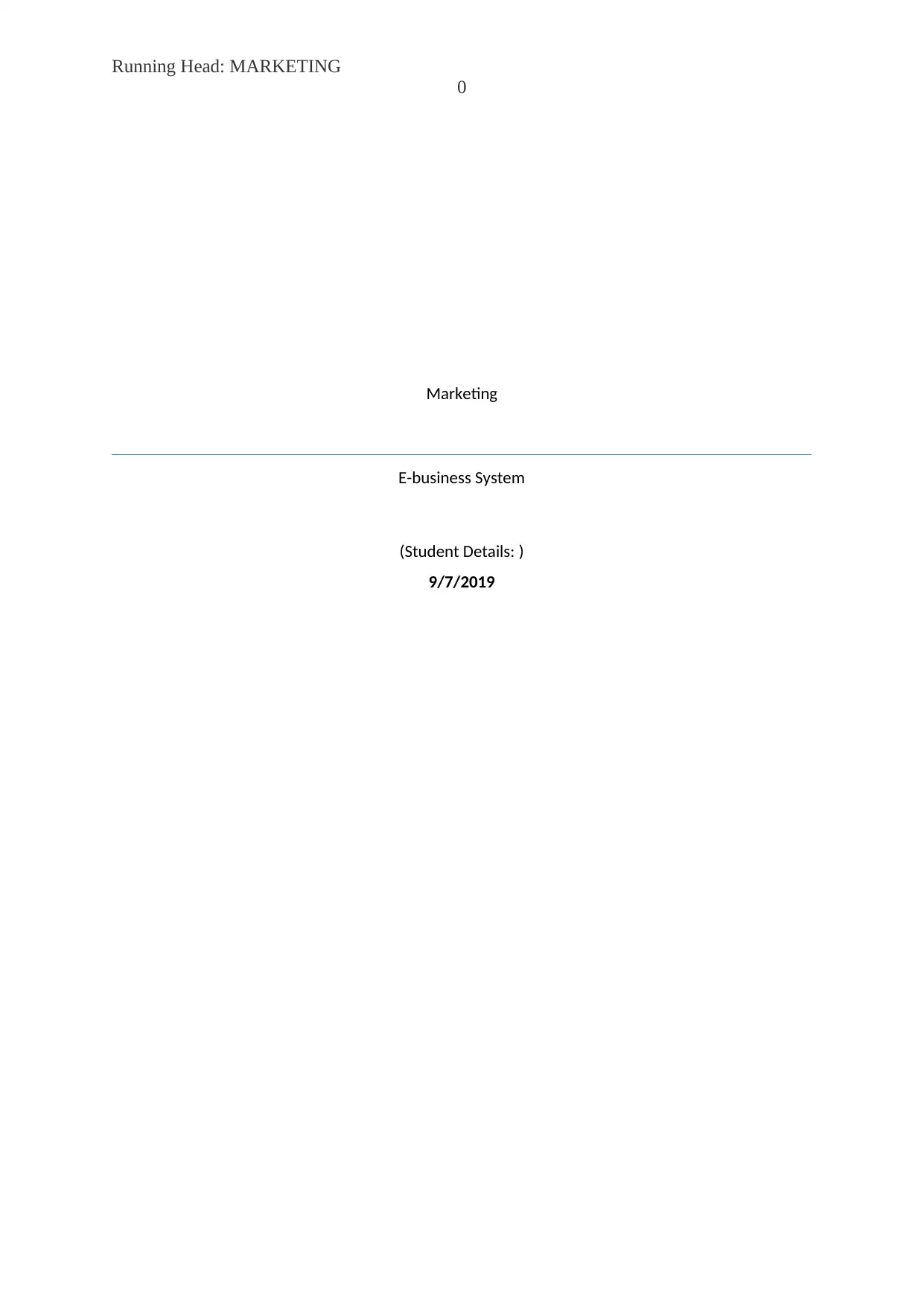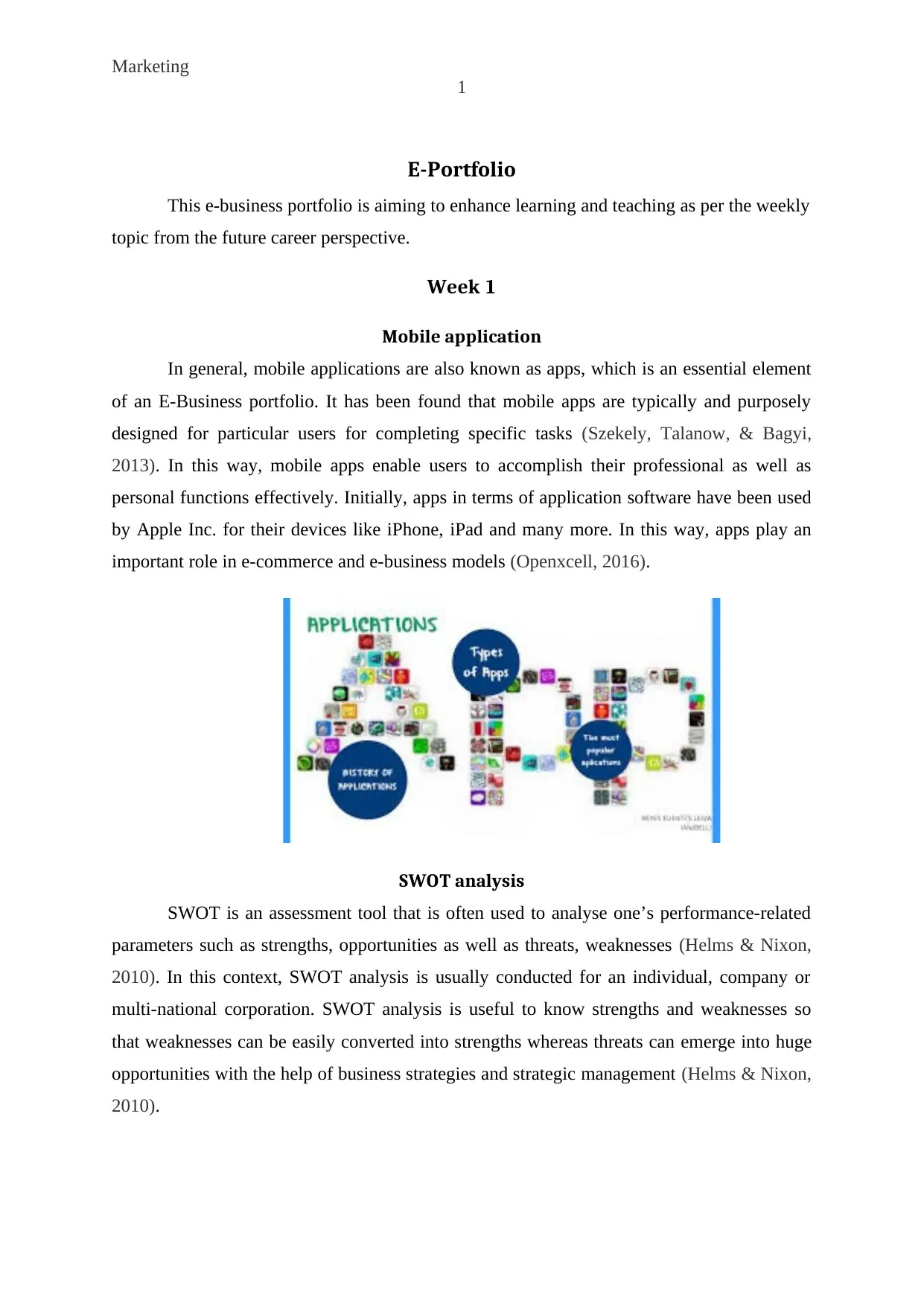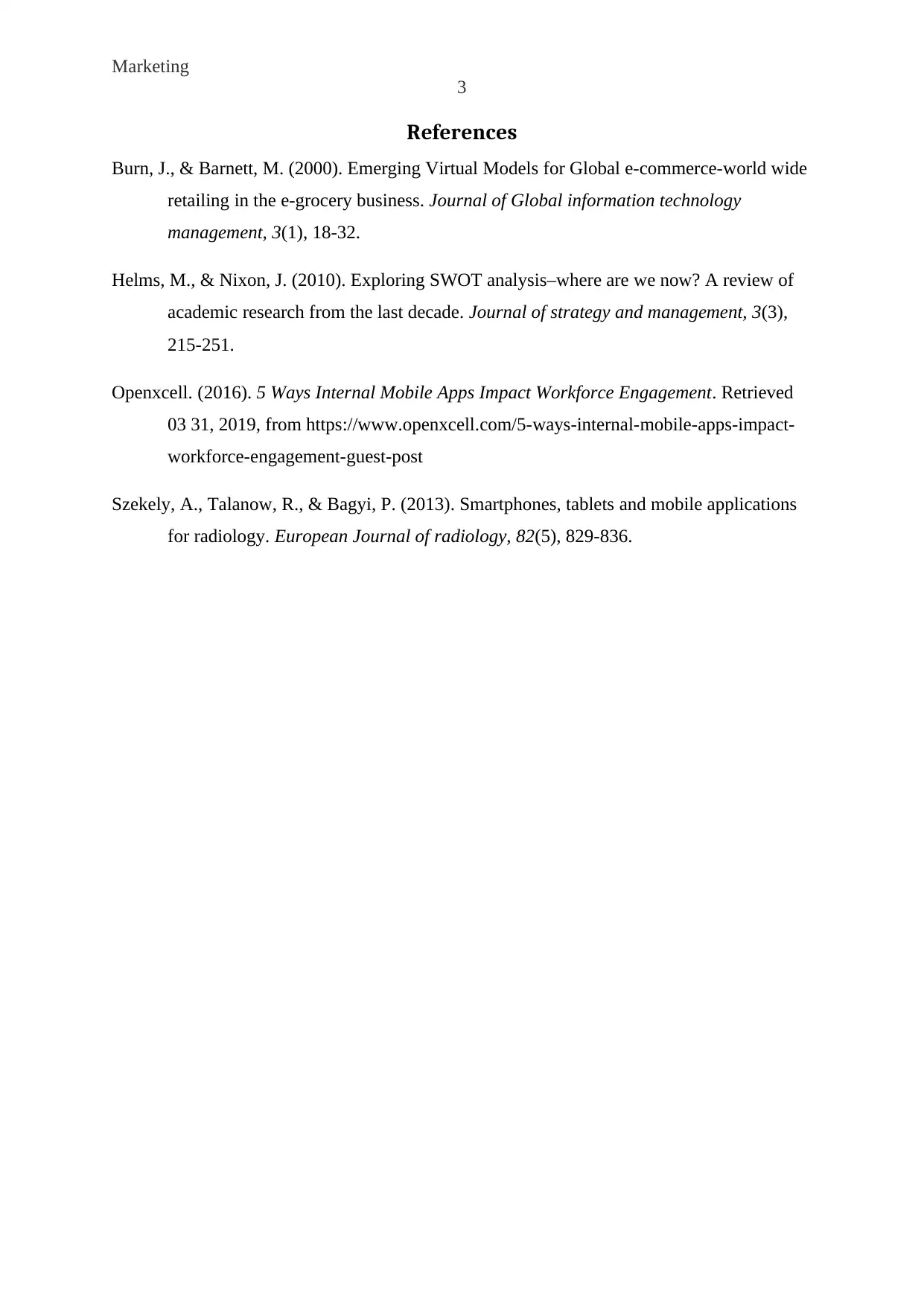E-Business Systems E-Portfolio (COIT20250): Marketing Strategies
VerifiedAdded on 2022/12/19
|4
|539
|57
Project
AI Summary
This e-portfolio, created by a student, focuses on marketing within the e-business context. It explores key elements such as mobile applications, websites, and SWOT analysis. The portfolio examines the strengths, weaknesses, opportunities, and threats of platforms like BRICKX, providing insights into their e-commerce presence and strategies. It incorporates references to academic and general sources published within the last five years, aligning with the course's learning outcomes to articulate recent developments, compare e-business technologies, and analyze business models. The e-portfolio aims to enhance learning and teaching through weekly topics and maximize engagement with unit resources, with the overall goal of providing practical knowledge for future career development.
1 out of 4










![[object Object]](/_next/static/media/star-bottom.7253800d.svg)